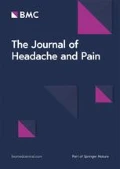Introduction
Previously, we demonstrated that stigma towards persons with migraine was comparable in magnitude to stigma towards individuals with epilepsy or panic disorder.
Aim
We sought to measure stigma towards individuals with differing migraine phenotypes versus comparator conditions.
Methods
Subjects were recruited on-line (MTurk), consented, and randomized to assess one of six fictional vignettes:
-
1)
a woman with migraine four days/month with zero lost workdays/year (W0)
-
2)
a woman with migraine four days/month with two lost workdays/year (W2)
-
3)
a man with migraine four days/month with two lost workdays/year (M2)
-
4)
a woman with seizures four days/month with two lost workdays/year (E2)
-
5)
a woman caring for her invalid husband four days/month with two lost workdays/year (H2)
-
6)
a woman with migraine twenty days/month with ten lost workdays/year (W10)
Subjects used sliders from 0 to 100 to answer five questions measuring social distance attitudes (SDA) towards the individual described in the vignette; maximum stigmatizing attitude would be a total SDA score of 500. [Study approved by UBC Office of Research Services.]
Results
3,617 total US subjects ≥19 years old completed the survey (mean age 33.2 years; 51% female).
W2/M2/E2 scores and W0/E2 scores did not differ significantly. Relative to W2/M2, W0 was significantly lower and H2 was significantly higher. W10 was significantly higher than H2.
Conclusions
Among MTurk subjects, stigma towards persons with migraine increased with their absenteeism, but did not vary by gender.
No conflict of interest.
Author information
Authors and Affiliations
Rights and permissions
Open Access This article is distributed under the terms of the Creative Commons Attribution 4.0 International License (https://creativecommons.org/licenses/by/4.0), which permits use, duplication, adaptation, distribution, and reproduction in any medium or format, as long as you give appropriate credit to the original author(s) and the source, provide a link to the Creative Commons license, and indicate if changes were made.
About this article
Cite this article
Shapiro, R., Lipton, R. & Reiner, P. EHMTI-0313. Factors influencing stigma towards persons with migraine. J Headache Pain 15 (Suppl 1), E36 (2014). https://doi.org/10.1186/1129-2377-15-S1-E36
Published:
DOI: https://doi.org/10.1186/1129-2377-15-S1-E36

